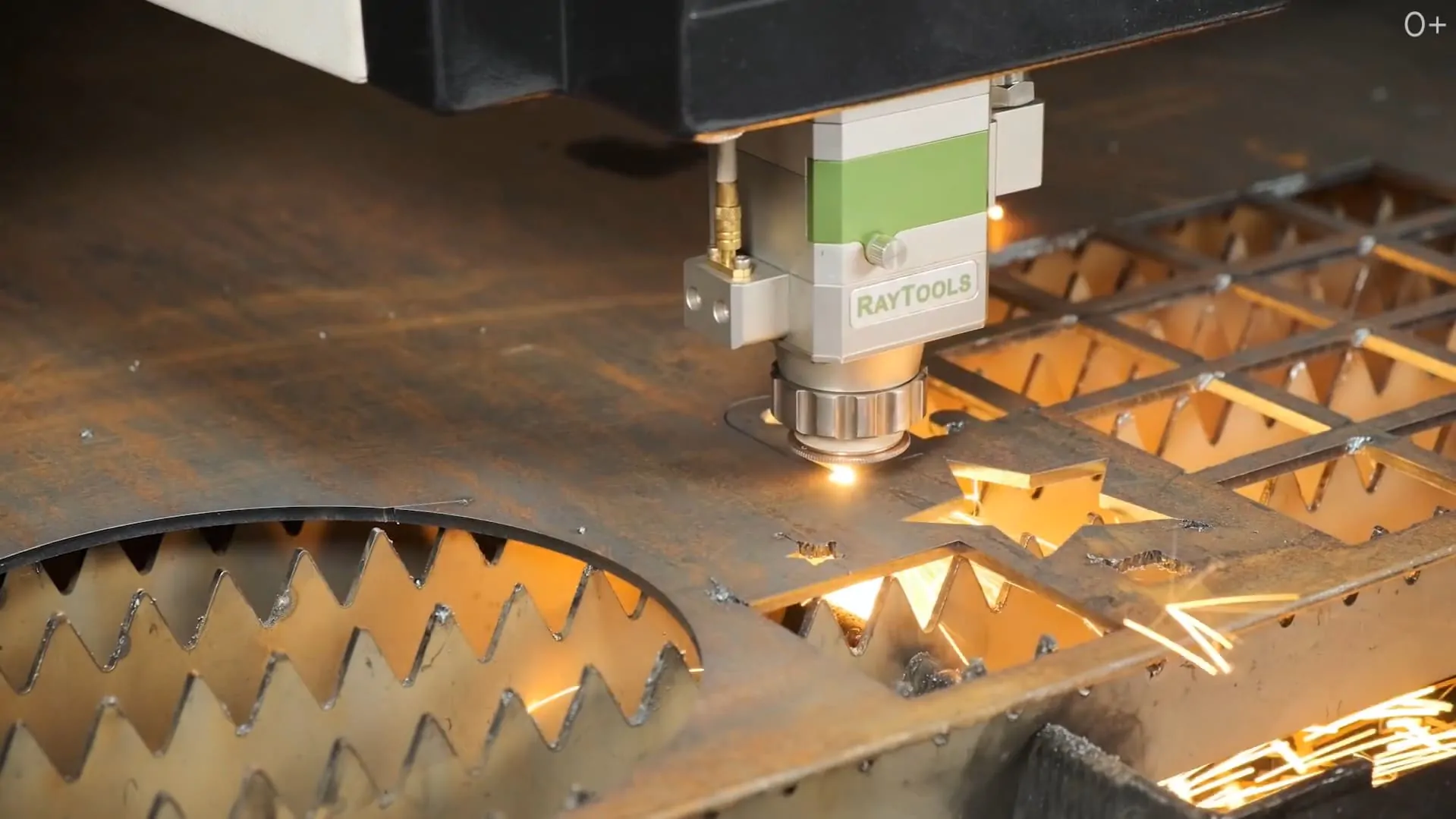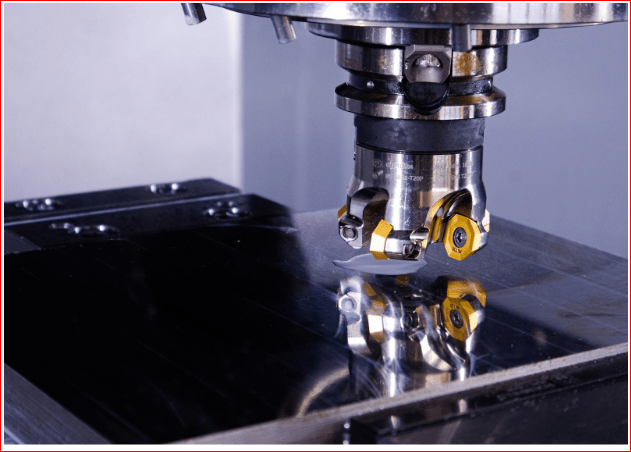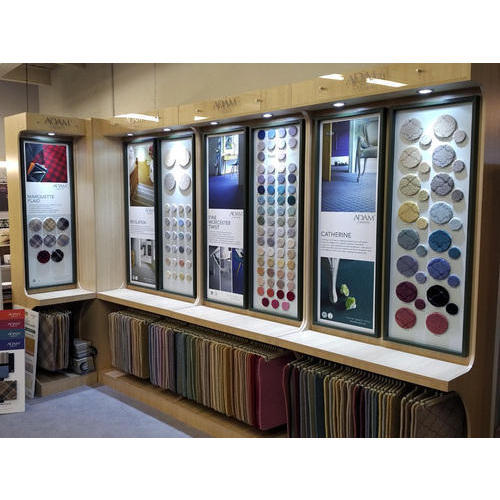If you’re looking for a way to cut through metal quickly and easily, then you need a laser cutting machine. In this blog, we’ll explore the principle behind laser cutting machines and how they can be used in a variety of industries.
Table of Contents
What is a laser cutting machine?
A laser cutting machine is a computer-controlled machine that uses a laser beam to cut material. The beam is generated by a laser source, which is then focused by a lens or mirror system onto the material to be cut. The material is then vaporized or burned away, leaving a clean, precise cut edge.
Laser cutting machines are used in a wide variety of industries for cutting materials of all shapes and sizes. They can be used to cut sheet metal, stainless steel, aluminum, titanium, wood, plastics, granite, and even glass.
How does a laser cutting machine work?
Laser cutting machines work by directing a very powerful laser at the material that needs to be cut. The material is usually in the form of a sheet or a coil. The laser beam is generated by a laser source, which is usually located inside the cutting machine itself.
The laser beam is then directed at the material by a system of mirrors and lenses, which are controlled by a computer. The computer calculates the precise path that the laser beam needs to follow in order to cut the material in the desired shape.
When the laser beam comes into contact with the material, it causes it to melt, vaporize, or burn. The speed at which the beam moves across the material determines how deep into the material it will cut.
The principle of laser cutting
When the laser beam is focused on the surface of the workpiece, the energy of the laser beam is concentrated on a very small area. Under the action of high-power density, the temperature of the irradiated area rises rapidly, and then melts and vaporizes instantaneously. At this time, if there is an assist gas (such as oxygen, nitrogen, carbon dioxide, etc.), it can be blown away with the molten material by using a compressed gas such as nitrogen to take away the heat generated by vaporization at the same time to achieve rapid melting and cutting.
The advantages of laser cutting
Laser cutting machine has the advantages of high precision, fast speed, large format, and good cutting quality.
- High precision: laser beam is very fine, the focus spot is small, generally 0.2-0.3mm in diameter, so the cutting seam is very narrow, generally only 0.1-0.3mm;
- Fast speed: when the power is same, the cutting speed of laser beam is 3-5 times than that of plasma;
- Large format: some laser cutting machines can reach 2*3 meters or even larger;
- Good cutting quality: the laser beam will not produce mechanical deformation to the parts being cut during cutting process, and there is no need for secondary processing;
The disadvantages of laser cutting
In addition to the many advantages of laser cutting, there are also some disadvantages. One of the main disadvantages is the high initial investment cost. Laser cutting machines are usually very expensive, and it can take a long time to recoup the initial investment.
Another disadvantage is that laser cutting machines require a lot of maintenance and upkeep. The lasers and cutting heads need to be regularly calibrated and aligned, and the machines need to be cleaned often to prevent debris from buildup. All of this maintenance can be costly and time-consuming.
Finally, laser cutting machines can produce harmful emissions, such as ozone and carbon monoxide. These emissions can be harmful to both people and the environment if they are not properly controlled.
The applications of laser cutting
Laser cutting is a technology that uses a laser to cut materials, and it is typically used for industrial manufacturing applications. These can be used to cut a variety of materials, including metal, wood, plastic, and more. This is an accurate and precise method of cutting, and it can be used to create intricate designs and shapes that would be difficult to create with other methods. Laser cutting is also a fast process, which means that it can be used to create large quantities of parts in a short amount of time.
The future of laser cutting
The future of laser cutting looks very exciting. With the ever-increasing speed and versatility of laser cutting machines, there is no limit to what they can be used for.
One area that is particularly exciting is the way that laser cutters are being used in the medical field. Laser cutters can be used to create stents and other implants that are precisely the right size for each individual patient. This means that patients can get the treatment they need faster and with less pain.
Laser cutters are also being used in the production of electric cars. The precision of laser cutting means that car parts can be made quickly and accurately, without the need for expensive molding processes. This makes electric cars more affordable and helps to reduce pollution from traditional petrol and diesel cars.
As laser cutting technology continues to develop, there will no doubt be many more exciting applications for it in the future.
FAQs about laser cutting
1.What is a laser cutting machine?
A laser cutting machine is a computer controlled machine that uses a laser to cut materials.
2.How does a laser cutting machine work?
A laser cutting machine focuses a high power laser beam onto the material to be cut. The heat from the laser melts or vaporizes the material, and the high pressure gas blows the molten or vaporized material out of the cut.
3.What materials can be cut with a laser?
Most metals (steel, stainless steel, aluminum, brass, copper) and some non-metals (plastics, textiles) can be cut with a laser.
4.How thick of a material can be cut with a laser?
Laser cutting machines are typically limited to cutting materials that are no more than 1″ (25 mm) thick. However, multiple passes can be made to cut thicker materials.
5.What is the difference between CO2 and fiber lasers?
CO2 lasers are better suited for cutting non-metallic materials such as wood, plastics, and textiles. Fiber lasers are better suited for cutting metals such as steel, stainless steel, and aluminum.












